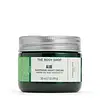What's inside
What's inside
 Key Ingredients
Key Ingredients

No key ingredients
 Benefits
Benefits

 Concerns
Concerns

 Ingredients Side-by-side
Ingredients Side-by-side

Butylene Glycol
HumectantAlcohol Denat.
AntimicrobialGlycerin
HumectantCarbomer
Emulsion StabilisingPolyglyceryl-4 Caprate
EmulsifyingPhenoxyethanol
PreservativeCaprylyl Glycol
EmollientTocopheryl Acetate
AntioxidantSodium Hydroxide
BufferingSodium Hyaluronate
HumectantParfum
MaskingSalicylic Acid
MaskingTrisodium Ethylenediamine Disuccinate
Benzyl Benzoate
AntimicrobialRubus Idaeus Juice
AstringentBenzyl Alcohol
PerfumingGeraniol
PerfumingLinalool
PerfumingLimonene
PerfumingHydroxycitronellal
PerfumingSodium Benzoate
MaskingAlpha-Isomethyl Ionone
PerfumingPotassium Sorbate
PreservativeCI 14700
Cosmetic ColorantButylene Glycol, Alcohol Denat., Glycerin, Carbomer, Polyglyceryl-4 Caprate, Phenoxyethanol, Caprylyl Glycol, Tocopheryl Acetate, Sodium Hydroxide, Sodium Hyaluronate, Parfum, Salicylic Acid, Trisodium Ethylenediamine Disuccinate, Benzyl Benzoate, Rubus Idaeus Juice, Benzyl Alcohol, Geraniol, Linalool, Limonene, Hydroxycitronellal, Sodium Benzoate, Alpha-Isomethyl Ionone, Potassium Sorbate, CI 14700
Water
Skin ConditioningPropanediol
SolventGlycerin
HumectantCaprylic/Capric Triglyceride
MaskingButylene Glycol
HumectantCoco-Caprylate/Caprate
EmollientGlyceryl Stearate Citrate
EmollientMyristyl Myristate
EmollientElaeis Guineensis Oil
EmollientOctyldodecanol
EmollientSesamum Indicum Seed Oil
EmollientSqualane
EmollientButyrospermum Parkii Butter
Skin ConditioningCetearyl Alcohol
EmollientCetyl Alcohol
EmollientPhenoxyethanol
PreservativeCaprylyl Glycol
EmollientAloe Barbadensis Leaf Juice Powder
Skin ConditioningAcrylates/C10-30 Alkyl Acrylate Crosspolymer
Emulsion StabilisingSodium Gluconate
Skin ConditioningCentella Asiatica Leaf Extract
Skin ConditioningXanthan Gum
EmulsifyingSodium Hydroxide
BufferingCitric Acid
BufferingWater, Propanediol, Glycerin, Caprylic/Capric Triglyceride, Butylene Glycol, Coco-Caprylate/Caprate, Glyceryl Stearate Citrate, Myristyl Myristate, Elaeis Guineensis Oil, Octyldodecanol, Sesamum Indicum Seed Oil, Squalane, Butyrospermum Parkii Butter, Cetearyl Alcohol, Cetyl Alcohol, Phenoxyethanol, Caprylyl Glycol, Aloe Barbadensis Leaf Juice Powder, Acrylates/C10-30 Alkyl Acrylate Crosspolymer, Sodium Gluconate, Centella Asiatica Leaf Extract, Xanthan Gum, Sodium Hydroxide, Citric Acid
Ingredients Explained
These ingredients are found in both products.
Ingredients higher up in an ingredient list are typically present in a larger amount.
Butylene Glycol (or BG) is used within cosmetic products for a few different reasons:
Overall, Butylene Glycol is a safe and well-rounded ingredient that works well with other ingredients.
Though this ingredient works well with most skin types, some people with sensitive skin may experience a reaction such as allergic rashes, closed comedones, or itchiness.
Learn more about Butylene GlycolCaprylyl Glycol is a humectant and emollient, meaning it attracts and preserves moisture.
It is a common ingredient in many products, especially those designed to hydrate skin. The primary benefits are retaining moisture, skin softening, and promoting a healthy skin barrier.
Though Caprylyl Glycol is an alcohol derived from fatty acids, it is not the kind that can dry out skin.
This ingredient is also used as a preservative to extend the life of products. It has slight antimicrobial properties.
Learn more about Caprylyl GlycolGlycerin is already naturally found in your skin. It helps moisturize and protect your skin.
A study from 2016 found glycerin to be more effective as a humectant than AHAs and hyaluronic acid.
As a humectant, it helps the skin stay hydrated by pulling moisture to your skin. The low molecular weight of glycerin allows it to pull moisture into the deeper layers of your skin.
Hydrated skin improves your skin barrier; Your skin barrier helps protect against irritants and bacteria.
Glycerin has also been found to have antimicrobial and antiviral properties. Due to these properties, glycerin is often used in wound and burn treatments.
In cosmetics, glycerin is usually derived from plants such as soybean or palm. However, it can also be sourced from animals, such as tallow or animal fat.
This ingredient is organic, colorless, odorless, and non-toxic.
Glycerin is the name for this ingredient in American English. British English uses Glycerol/Glycerine.
Learn more about GlycerinPhenoxyethanol is a preservative that has germicide, antimicrobial, and aromatic properties. Studies show that phenoxyethanol can prevent microbial growth. By itself, it has a scent that is similar to that of a rose.
It's often used in formulations along with Caprylyl Glycol to preserve the shelf life of products.
Sodium Hydroxide is also known as lye or caustic soda. It is used to adjust the pH of products; many ingredients require a specific pH to be effective.
In small amounts, sodium hydroxide is considered safe to use. However, large amounts may cause chemical burns due to its high alkaline.
Your skin has a natural pH and acid mantle. This acid mantle helps prevent harmful bacteria from breaking through. The acid mantle also helps keep your skin hydrated.
"Alkaline" refers to a high pH level. A low pH level would be considered acidic.
Learn more about Sodium Hydroxide